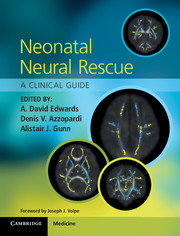Book contents
- Frontmatter
- Contents
- List of contributors
- Foreword
- Section 1 Scientific background
- Section 2 Clinical neural rescue
- 6 Challenges for parents and clinicians discussing neuroprotective treatments
- 7 The pharmacology of hypothermia
- 8 Selection of infants for hypothermic neural rescue
- 9 Hypothermia during patient transport
- 10 Whole body cooling for therapeutic hypothermia
- 11 Selective head cooling
- 12 Hypothermic neural rescue for neonatal encephalopathy in mid- and low-resource settings
- 13 Cerebral function monitoring and EEG
- 14 Magnetic resonance imaging in hypoxic–ischaemic encephalopathy and the effects of hypothermia
- 15 Novel uses of hypothermia
- 16 Neurological follow-up of infants treated with hypothermia
- 17 Registry surveillance after neuroprotective treatment
- Section 3 The future
- Index
- References
9 - Hypothermia during patient transport
from Section 2 - Clinical neural rescue
Published online by Cambridge University Press: 05 March 2013
- Frontmatter
- Contents
- List of contributors
- Foreword
- Section 1 Scientific background
- Section 2 Clinical neural rescue
- 6 Challenges for parents and clinicians discussing neuroprotective treatments
- 7 The pharmacology of hypothermia
- 8 Selection of infants for hypothermic neural rescue
- 9 Hypothermia during patient transport
- 10 Whole body cooling for therapeutic hypothermia
- 11 Selective head cooling
- 12 Hypothermic neural rescue for neonatal encephalopathy in mid- and low-resource settings
- 13 Cerebral function monitoring and EEG
- 14 Magnetic resonance imaging in hypoxic–ischaemic encephalopathy and the effects of hypothermia
- 15 Novel uses of hypothermia
- 16 Neurological follow-up of infants treated with hypothermia
- 17 Registry surveillance after neuroprotective treatment
- Section 3 The future
- Index
- References
Summary
Introduction
Therapeutic hypothermia is part of standard care for term and near-term newborn infants with moderate-to-severe hypoxic–ischaemic encephalopathy (HIE) in neonatal intensive care units (NICU) with the expertise, equipment, education, training and protocols to provide this treatment (cooling treatment centres) [1–5]. The safe implementation of hypothermia treatment is being monitored and supported by data from international newborn encephalopathy registries [6–8].
For maximal neuroprotective benefit, therapeutic hypothermia must commence as soon as possible after the hypoxic-ischaemic insult and within the 6-hour “window of opportunity”, before the onset of seizures and secondary neuronal injury [9,10]. Neuroprotective effect rapidly declines with delayed initiation of hypothermia treatment [9,11].
Randomized controlled trials (RCT) in term newborn infants with HIE assumed that the insult occurred at the time of birth and initiated hypothermia by 6 hours of age [6,12–17]. Standard thermoregulatory management was maintained until infants were assessed for eligibility, informed parental consent was obtained and randomization occurred; consequently hypothermia treatment was delayed until 4 to 5 hours postnatal age.
- Type
- Chapter
- Information
- Neonatal Neural RescueA Clinical Guide, pp. 95 - 106Publisher: Cambridge University PressPrint publication year: 2013
References
- 1
- Cited by



